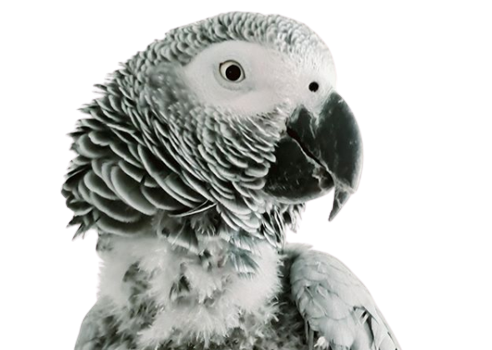So, you’ve welcomed a new African Grey parrot into your life—congratulations! You’ve got yourself a chatty, intelligent, sometimes-bossy feathered friend who’s bound to entertain you with a dash of sass. But wait… what about feeding? You might be wondering, “How often should I feed my African Grey?” It’s a great question, and it’s something every responsible parrot parent asks. After all, you want your African Grey to stay happy, healthy, and not too… shall we say… “hangry.”
Table of Contents
In this post, we’ll dive into the feeding guidelines for African Greys, breaking down everything from diet essentials to feeding schedules, portion sizes, and even a few food-related quirks these parrots have. So, buckle up for a fun, informative read—this isn’t your average bird food guide!
Why African Grey Parrot Feeding Matters

First things first: feeding an African Grey isn’t quite as simple as giving them a bowl of seeds. African Greys are highly intelligent creatures with specific nutritional needs. They’re also creatures of habit who love routine (yes, they’re a bit like your super-organized friend who color-codes their closet).
So, if you want a healthy, long-lived, and content African Grey, it’s essential to get the feeding part just right. Plus, you don’t want to end up with a parrot that gives you the stink-eye every morning because they’re hungry!
What Should Be on the Menu?
African Greys are true foodies—they need a variety of flavors, textures, and nutrients to thrive. Here’s what to keep in their bowl to keep them satisfied and healthy:
1. Pellets (The Powerhouse Food)
Pellets are like the multivitamin of the parrot world, providing a balanced base of nutrients. They’re designed to cover most of an African Grey’s dietary needs, so a good-quality pellet should make up around 50-60% of their daily intake. It’s like the parrot equivalent of your morning smoothie packed with veggies (minus the chia seeds).
2. Fresh Fruits and Vegetables (Nature’s Candy and Crunch)
Fruits and veggies are the next big piece of the puzzle, and African Greys love them. Think leafy greens, bell peppers, carrots, apples, and berries. Offer a colorful mix daily, as variety not only keeps things interesting but also ensures they get a range of vitamins and minerals. Just skip the avocado—it’s a big no-no for parrots.
3. Nuts and Seeds (Parrot Snacks)
While nuts and seeds shouldn’t make up the bulk of their diet, they’re an excellent source of healthy fats and protein. African Greys have a soft spot for almonds, walnuts, and sunflower seeds. Keep it occasional, though, like a treat, as these can be high in fat.
4. Grains and Legumes (A Little Extra Crunch)
Adding a sprinkle of cooked grains or legumes can give their diet that little boost. Things like quinoa, rice, and lentils work well and give them extra fiber and protein. Plus, they love the crunch factor!
Feeding Schedule: How Often and How Much?

Alright, let’s talk timing. Just like humans, African Greys do best with a routine, so establishing a consistent feeding schedule is key. But here’s the fun part—African Greys are social eaters, and they actually love sharing mealtimes with you.
So if they look at you while you’re munching away on breakfast, it’s their not-so-subtle way of saying, “Where’s mine?”
Morning Meal
Start their day with a fresh bowl of pellets along with a small handful of fruits and veggies. Morning feeding sets them up with the energy they need to, well, talk your ear off and explore their surroundings.
Afternoon Snack
Around midday, offer a few more fresh fruits and veggies, perhaps paired with a small amount of seeds or nuts as a treat. This snack isn’t mandatory, but it can keep their spirits high, especially if you’re out during the day.
Evening Meal
In the evening, offer another serving of pellets and a few more veggies. At this point, they’re winding down, so this will keep them satisfied through the night.
Portion Sizes
When it comes to portion sizes, aim for about 1/4 to 1/2 cup of pellets per day, divided across meals. As for fruits and veggies, a small handful in each serving is a good guideline, keeping in mind that African Greys have a habit of picking out the “good stuff” (like apples) and tossing the rest.
Do African Greys Need Water?

Yes, of course! African Greys need fresh water daily, and they’ll definitely let you know if their water isn’t to their liking. (Imagine a bird that’s perfected the side-eye—it’s real, trust me.) Make sure to refresh their water bowl every day, and clean it regularly to avoid bacterial buildup.
Food Dos and Don’ts
African Greys can be sensitive to certain foods, so keep an eye out for these do’s and don’ts:
Food Dos
- Leafy Greens like kale, spinach, and arugula
- Fruits such as apples, oranges, and berries (remember, no seeds in apples!)
- Nuts like almonds and walnuts (in moderation)
- Vegetables including carrots, bell peppers, and sweet potatoes
Food Don’ts
- Avocado – Very very toxic to parrots, keep it far away.
- Chocolate – Another big no.
- Caffeine – Avoid anything with caffeine; parrots don’t need a jolt of energy!
- Salt and Sugary Foods – Keep these out of their diet to prevent health issues.
Keeping Feeding Fun (Yes, Parrots Get Bored Too)

One of the perks of having an African Grey is their intelligence, but it also means they get bored with their food easily. To keep them interested, try rotating their fruits and veggies daily. You can also get creative with “foraging” activities. Hide small pieces of food in a paper towel, wrap them up, and let your parrot “discover” their snacks. It’s like a treasure hunt, and they love it.
Sample Feeding Plan for African Greys
Here’s a sample plan to keep things simple:
- Morning: 1/4 cup pellets + a handful of mixed veggies (bell peppers, carrots)
- Midday Snack: A few berries or an apple slice + 1-2 almonds
- Evening: 1/4 cup pellets + a handful of leafy greens (spinach, kale)
Feel free to adjust quantities based on your parrot’s activity level, age, and preferences.
Wrapping Up
At the end, I would say feeding your African Grey doesn’t have to be complicated. With a balanced diet of pellets, fresh fruits and veggies, and occasional treats, your parrot will thrive.
Remember to keep the food routine consistent, and don’t forget to throw in a little variety to keep things exciting. Now, go ahead and spoil your feathered friend with some delicious (and healthy) meals. And, hey, let us know if they have any funny eating quirks—some of them can be picky little food critics!
If you liked this blog, please share it with your family and friends who might also find it helpful. If you love African Greys, join our community of Grey owners! You can meet other owners, share tips and learn from each other.
Stay safe and much love!



